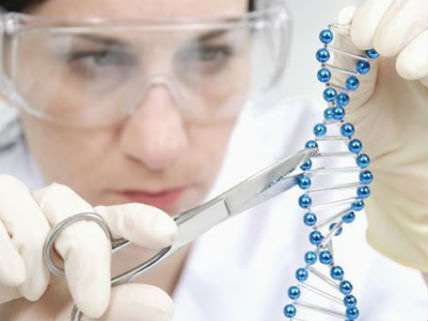Another Pointless Human Gene-Editing Moratorium
Now watch the bioluddites swarm out of the policy woodwork.

Biotechnology was unfortunately born precautionary. Back in the Medieval period (a.k.a. the 1970s) a bunch of biologists got together to call for a moratorium on using the then-new gene-splicing techniques (recombinant DNA) to transfer genes from one organism to another. A self-selected group met in 1975 at Asilomar where they recommended establishing a system of recombinant DNA research regulation under the National Institutes of Health. Naturally, the brouhaha attracted the attention of luddite activists and the rest is history.
In 1984, just ten year after the gene-splicing moratorium, Burke Zimmerman noted in his book Biofuture:
In looking back, it would be hard to insist that a law was necessary, or, perhaps, that guidelines were necessary.
Well, yes. Nevetheless, dire predictions abounded. For example, the New York Times magazine published an overwrought article speculating that gene-splicing could result epidemics of infectious cancer. I know. I know. Subsequently, gene-splicing has produced hundreds of billions of genetically modified organisms without any significant downsides, and lots of upsides including new medicines and crops. High school biology students now do gene-splicing experiments.
Similarly, lots of allegedly smart folks called for a ban on using in vitro fertilization techniques to produce test-tube babies in the 1970s (the era was rife not only with bad fashion, but also really bad policies). Some 4 million children have since been born using those techniques and the rate of birth defects is about the same as for conventional reproduction. In 2001, the Food and Drug Administration banned the transfer of cytoplasm between human eggs as way to treat mitochondrial diseases.
In 2012, two brilliant biologists devised the new and extremely precise CRISPR gene-editing technique. Based on a system used by bacteria to defend themselves against viruses, CRISPR enables super-precise editing of a genome down to replacing a single defective DNA base pair.
Now come some scientists and bioethicists with an article in Science arguing for a moratorium on the clinical use of CRISPR (damned paywall!) to treat human genetic defects, especially those that change the germline, i.e., sperm and eggs. Prudence is a good idea; it is early days yet for the technology. However, the Asilomar precedent of convening a confab of self-selected would-be research regulators is not good.
Again, it is too early to use the technology in the clinic, but research using monkey embryos has shown great promise for using the technique to correct genetic defects. Entangling the technology with bioethicists - whose first response is always to slow down technological progress - is a mistake that will much more likely delay getting benefits to patients than protect them from possible downsides.
One signatory to the moratorium, Harvard biologist George Church already seems to realize this:
"Those uncertainties, together with existing regulations, are sufficient to prevent responsible scientists from attempting any genetically altered babies, says George Church, a molecular geneticist at Harvard Medical School in Boston. Although he signed the Science commentary, he says the discussion "strikes me as a bit exaggerated." He maintains that a de facto moratorium is in place for all technologies until they're proven safe. "The challenge is to show that the benefits are greater than the risks."
I predict that that won't be much of a challenge.
In the wake of this wrongheaded Science article it won't take long for bioluddite activists swarm out of the woodwork to try stop this technology